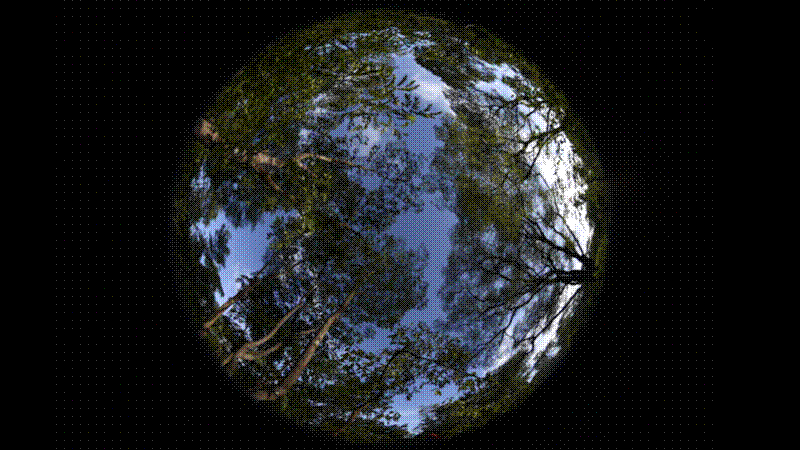I was asked to give a small round up of the research I’ve been doing in Angola with a terrestrial laser scanner to try and quantify relationships between tree species diversity and woodland canopy architecture. Here is a link to the pdf of the slides , and below is the script for the talk.
Script
1- I was asked to give a short presentation on what I’ve been working on recently for a chapter of my PhD thesis. Broadly, throughout my whole PhD, I’ve been looking at possible links between tree species diversity and woody biomass in southern African woodlands. For this particular study, I’ve been investigating how woodland tree foliage cover and spatial distribution is affected by tree species composition, and how this affects woody biomass.

2- Miombo woodlands, where I am focussing my work, are woody savannahs that span southern Africa and are characterised by an often thick grassy understorey and relatively species poor canopy tree layer that can vary in canopy cover. Miombo woodlands are structured by seasonal fires which occassionally track up into the tree canopy, leading to an abundance of multistemmed small trees from repeated regrowth after fire.

3- I’m approaching my PhD from the standpoint of the Biodiversity-Ecosystem Function Relationship, which postulates that at a local scale, as you increase the number of species present in an ecosystem, the values of various rate ecosystem processes and properties also increase, these processes and properties are known as ecosystem functions. Gross primary productivity is the most widely studied ecosystem function, but the definition can be extended to things like soil water or nutrient retention, or to things like the resilience of productivity to disturbance. The idea of a universal Biodiversity Ecosystem Function Relationship is still a contentious subject, but an attractive hypothesis, as it helps to further justify biodiversity conservation. More likely is that the Biodiversity Function Relationship varies hugely among ecosystems, according to the ecosystem functions being studied, and according to other environmental drivers which affect resource availability and the degree of disturbance in an ecosystem.
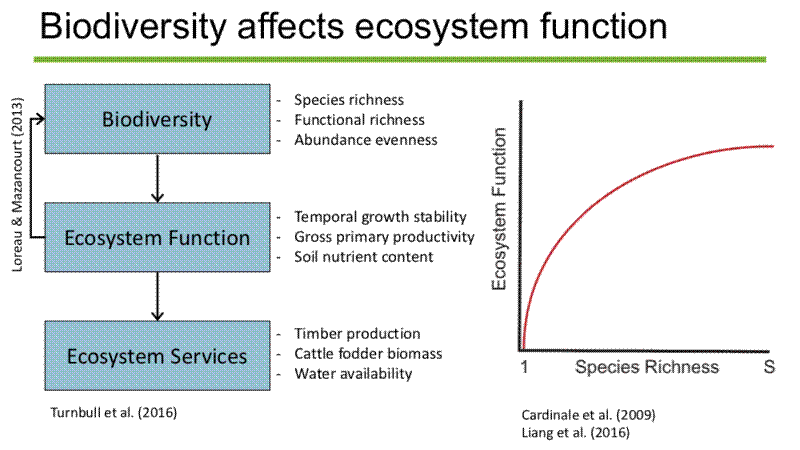
4- For this study, I wanted to look at how species composition of trees in miombo woodlands corresponded with the tree canopy architecture, spatial structure, and woody biomass of those woodlands. Tree species vary in the different niches they fill within a woodland, adopting different growth strategies to overcome competition and disturbances. Some tree species might be better able to escape the flammable zone near to the ground to become large emergent trees while others may instead rely on extensive root systems to allow regrowth after seasonal burning, leading to a prolonged existence as a multi-stemmed bush-like understorey tree. Similarly, some canopy tree species may be more tolerant of low light environments during growth allowing them to grow under the canopy of overhanging large trees. With all these different growth strategies, having more tree species in a given area could result in a higher stem density and overall foliage cover, leading to greater woody biomass. Traditionally, measuring things like canopy structure would require lots of tape measures and long sticks to map tree dimensions, but this is incredibly time consuming and unless a great deal of care is taken when measuring, the data can be pretty inaccurate so I decided to employ the use of a terrestrial laser scanner to help me automate that data collection, which I’ll get onto in a little bit.

5- I conducted my fieldwork inside Bicuar National Park in southwest Angola. The park is about 8000 km^2, and represents one of the best preserved contiguous areas of miombo in the region, with much of the surroundings having been transformed to grazing and arable land. With a team from the Instituto de Ciencias de Educacao, based in Lubango about 120 km away from the park, we created 15 1 Ha square survey plots within which I conducted measurements to answer this question.
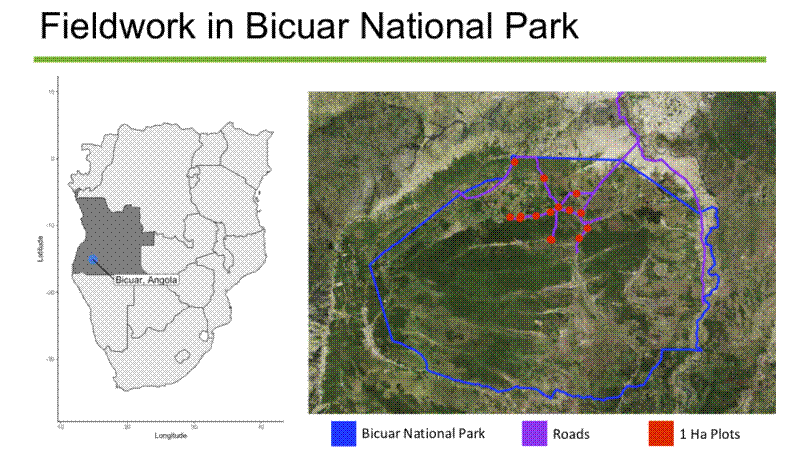
6- I further subdivided these 1 Ha plots into a grid of nine 10 m diameter circular subplots which represent the sample unit for my study. In each of these subplots I measured every tree that had branch material inside the subplot, I measured the trunk diameter and height, the species and the precise location using GNSS equipment with a rover and base station used in a post processing kinematic setup. I used a phase shift terrestrial laser scanner to create a 3D point cloud of the tree foliage material inside each subplot, with the laser scanner positioned in multiple locations to allow me to eliminate potential shadows caused by the trees themselves. I used reflective targets which were also geo-referencd with the GNSS equipment to allow me to stitch the images together later. The point clouds can then be used to quantify the spatial structure of the tree canopy foliage in the different subplots.
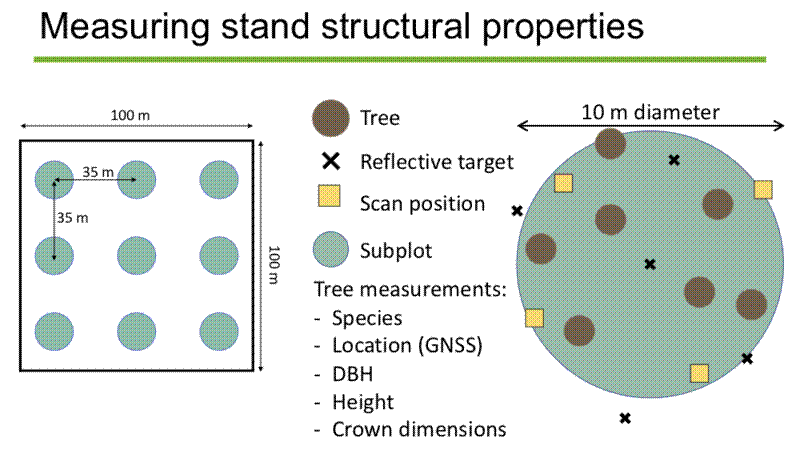
7- This is the laser scanner, a Leica HDS6100, which sits on a tripod and records a nearly spherical point cloud in 360 degrees. These are the reflective targets screwed onto threaded bar which was then hammered into the ground.
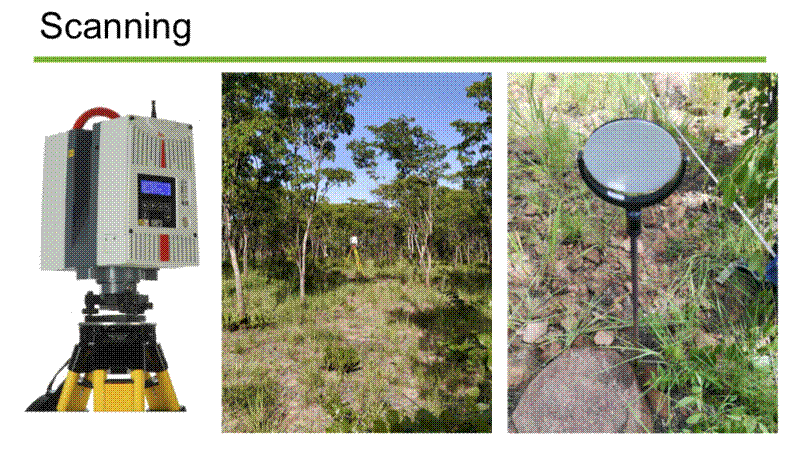
8- So now that I have all the scans and the fieldwork is mostly finished, the next step is to process them, which first involves taking the raw point cloud files from the scanner and stitching them together using Leica’s proprietary Cyclone software to eliminate shadows, then recentering the resulting point cloud on the centre of the circular subplot, and exporting that as a .ptx for each subplot, which show the coordinates in real space of each laser ‘hit’ on an object like a leaf or a tree trunk. With the help of some C code that a colleague wrote and has been kind enough to help me understand up to now, I should be able to generate foliage density profiles for each subplot, which show the distribution of tree foliage in the vertical plane across the subplot. I can then statistically analyse those foliage density profiles, taking into account my other measurements of biomass and species composition to test hypotheses of whether tree species composition does indeed affect the vertical distribution of leaf area in a subplot, and whether that is a mechanism by which plot level woody biomass is increased or decreased. I should be able to use the same point cloud data to look at horizontal aggregation of foliage as a function of species diversity and there is even the possibility that in the future I could use some other methods to extract individual tree canopies from the point cloud and analyse how individual tree growth forms vary across different woodland species communities. I only got back into normal work mode a couple of weeks back so at the moment I’m just working on getting all the data cleaned up and stitching the point clouds together. As always there are problems with some of the data, either because I didn’t properly exclude shadows or the GNSS locations aren’t accurate enough, so I’m thankful I built plenty of replication into the study design, having nine subplots per 1 Ha plot.
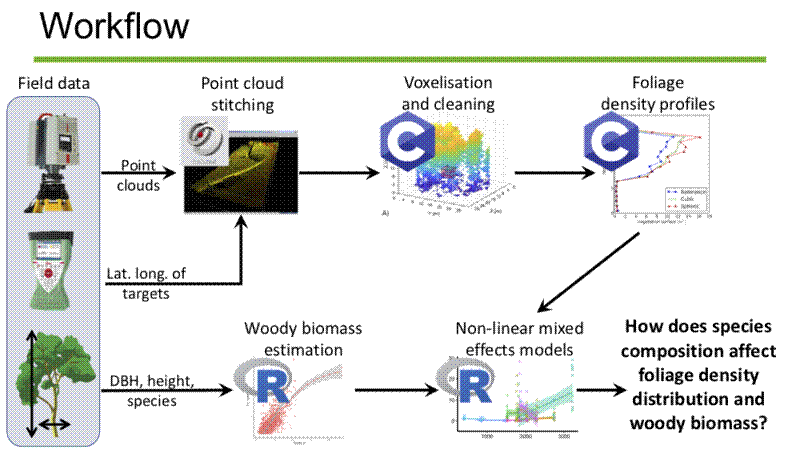
9- I should say that the NERC Geophysical Equipment Facility provided all the laser scanning and GPS equipment that I used and they were super helpful in all sorts of ways while I had the equipment on loan.
